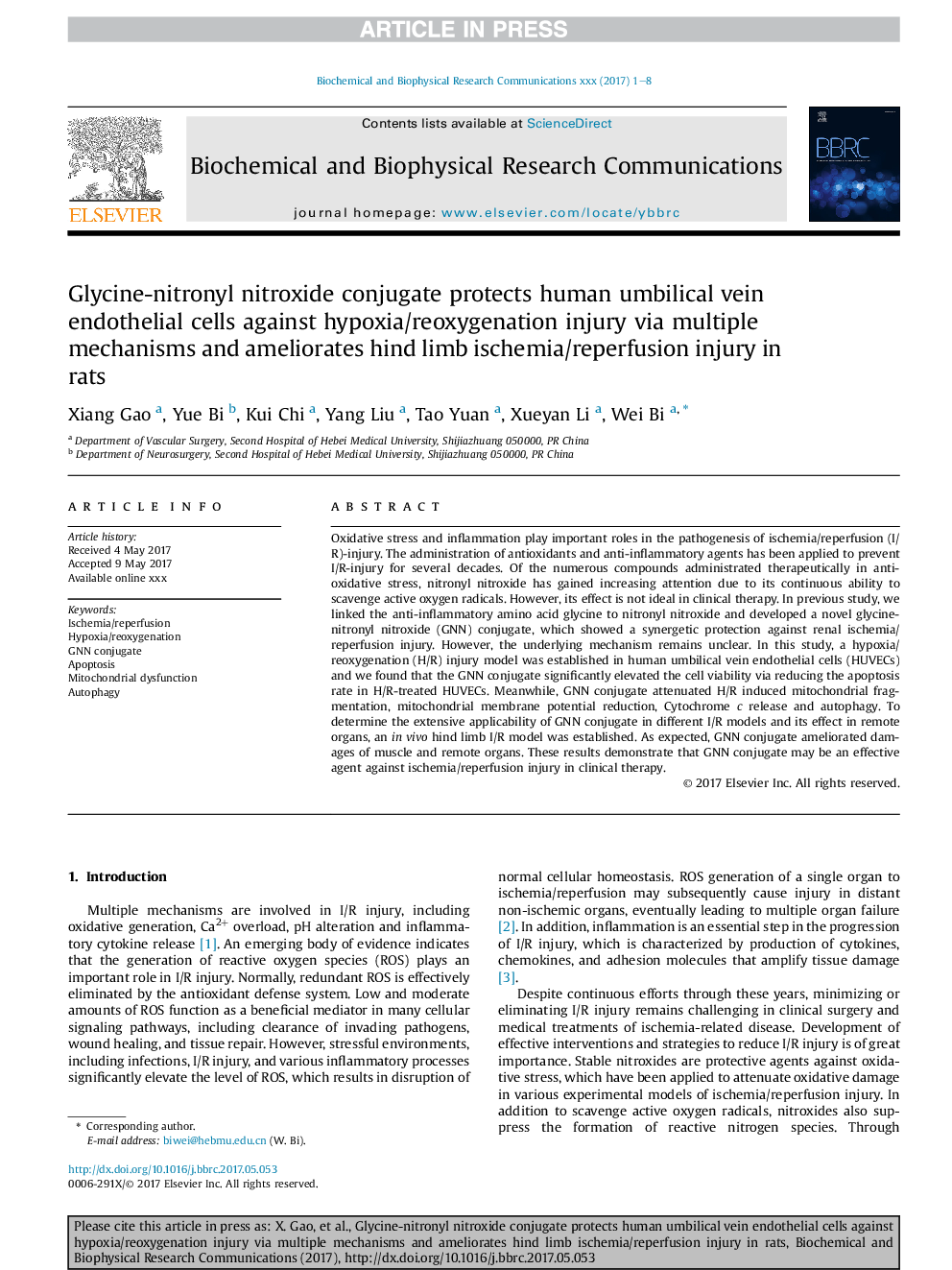| کد مقاله | کد نشریه | سال انتشار | مقاله انگلیسی | نسخه تمام متن |
|---|---|---|---|---|
| 5505519 | 1400271 | 2017 | 8 صفحه PDF | دانلود رایگان |
عنوان انگلیسی مقاله ISI
Glycine-nitronyl nitroxide conjugate protects human umbilical vein endothelial cells against hypoxia/reoxygenation injury via multiple mechanisms and ameliorates hind limb ischemia/reperfusion injury in rats
ترجمه فارسی عنوان
اتصال دهنده گلیسین نترنرول نیتروکسید محافظت سلول های اندوتلیال وریدی انسان در برابر آسیب هیپوکسی / واکنش زدایی از طریق مکانیزم های متعدد و کاهش آسیب ایسکمی اندام عقب / رپرفسنج در موش صحرایی
دانلود مقاله + سفارش ترجمه
دانلود مقاله ISI انگلیسی
رایگان برای ایرانیان
کلمات کلیدی
موضوعات مرتبط
علوم زیستی و بیوفناوری
بیوشیمی، ژنتیک و زیست شناسی مولکولی
زیست شیمی
چکیده انگلیسی
Oxidative stress and inflammation play important roles in the pathogenesis of ischemia/reperfusion (I/R)-injury. The administration of antioxidants and anti-inflammatory agents has been applied to prevent I/R-injury for several decades. Of the numerous compounds administrated therapeutically in anti-oxidative stress, nitronyl nitroxide has gained increasing attention due to its continuous ability to scavenge active oxygen radicals. However, its effect is not ideal in clinical therapy. In previous study, we linked the anti-inflammatory amino acid glycine to nitronyl nitroxide and developed a novel glycine-nitronyl nitroxide (GNN) conjugate, which showed a synergetic protection against renal ischemia/reperfusion injury. However, the underlying mechanism remains unclear. In this study, a hypoxia/reoxygenation (H/R) injury model was established in human umbilical vein endothelial cells (HUVECs) and we found that the GNN conjugate significantly elevated the cell viability via reducing the apoptosis rate in H/R-treated HUVECs. Meanwhile, GNN conjugate attenuated H/R induced mitochondrial fragmentation, mitochondrial membrane potential reduction, Cytochrome c release and autophagy. To determine the extensive applicability of GNN conjugate in different I/R models and its effect in remote organs, an in vivo hind limb I/R model was established. As expected, GNN conjugate ameliorated damages of muscle and remote organs. These results demonstrate that GNN conjugate may be an effective agent against ischemia/reperfusion injury in clinical therapy.
ناشر
Database: Elsevier - ScienceDirect (ساینس دایرکت)
Journal: Biochemical and Biophysical Research Communications - Volume 488, Issue 1, 17 June 2017, Pages 239-246
Journal: Biochemical and Biophysical Research Communications - Volume 488, Issue 1, 17 June 2017, Pages 239-246
نویسندگان
Xiang Gao, Yue Bi, Kui Chi, Yang Liu, Tao Yuan, Xueyan Li, Wei Bi,
